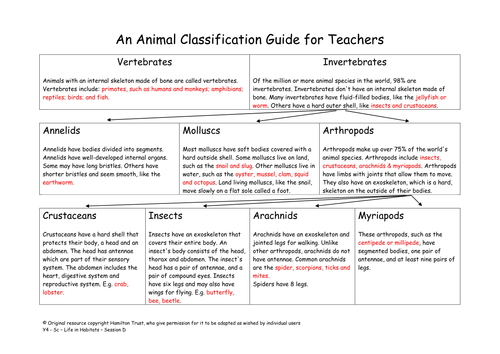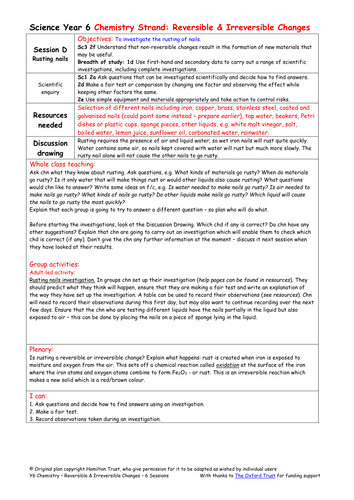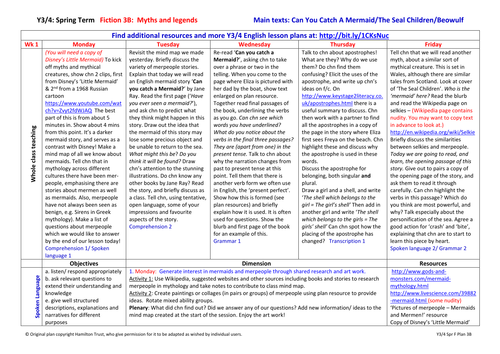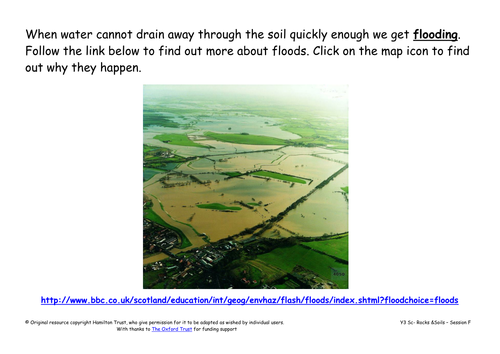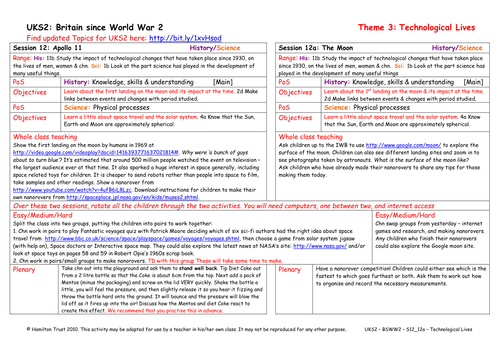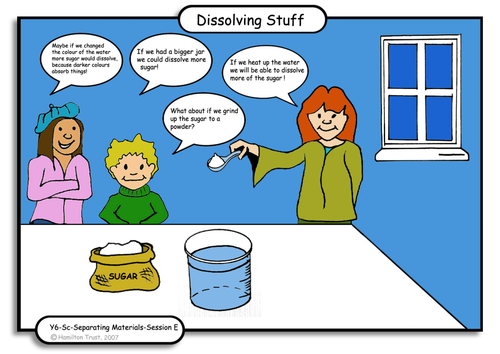
397Uploads
10045k+Views
11646k+Downloads
All resources

What is it?
Children find out how plants and animals are classified into groups. They then try to identify the minibeasts found during the field trip and create a key using a branching database to enable other children to identify them.
Suitable for Year 4 pupils.

Explore sight
Focus on the sense of sight. Play ‘Kim’s Game’ and identify some animal eyes. Discuss sensitivity of eyes and safety. Collect and group information about eye colour and create a pictogram of the results. Draw pictures of animals that can see in the dark.
Suitable for Year 1 pupils.

Rusting nails
Look at an irreversible change. Children set up an investigation to answer questions about nails rusting. Will they compare nails made from different materials or find out whether or not both water and air are needed for rusting to occur?
Suitable for Y6 pupils.

Dramatic Conventions Weeks 3 - 5
Children look at a variety of prepared scripts and broadcasts, both radio and TV. They discuss different types, then focus on news and short animations. Children write their own scripts and create a 90 second audio broadcast which they record.
Suitable for Year 5 and 6.

Year 3/4 Fiction 3: Myths and Legends
Children explore a variety of myths and enjoy the mythical creatures introduced in Can You Catch A Mermaid?, The Seal Children and Beowulf.
They learn these tales and use them as stimuli for creating their own myths and legends. They use the texts as models to help develop their understanding of detailed description in writing and correct grammar.
Suitable for Year 3 and 4.

History of Cars
Children listen to a memoir of an elderly person's first car and then look at modern day car brochures looking for features which are new, and write a list of features they would like to see in future cars.

Soil investigation
Look at images, and discuss the effects and causes of flooding. Do a practical investigation about the permeability of 3 different types of soils including measuring. Review what children have learnt.
Suitable for Y3 pupils.

Sketch Maps and Plans
Sketch maps of the local area and plans of homes and other places will help their link school friends understand the children’s daily lives as described in their diaries. Look at OS maps and street plans. Children use symbols and a key to clarify their maps and plans.
Suitable for years 5 and 6.

Infant Maths Leaflet
A leaflet for parents which outlines the type of Maths being taught in Key Stage 1 classrooms.

Revise forces
It’s forces ‘n’ fun in this session as the children get the opportunity to show what they already know. Through hands on activity they use slopes, magnets and elastic bands to revise previous learning. Forcemeters at the ready! Suitable for Y4 pupils.

Biographies
Discuss biographies and autobiographies and list the features of each showing diffs. Chn write a fact file or biography of one of well-known immigrants or descendants of immigrants identified in S10. Make class books for other children to read in school library.

Thermal insulators & conductors
The properties of materials relate to their use as everyday objects such as spoons. Children test the insulating properties of various stirrers & discuss everyday uses of materials for thermal insulation or conduction. Look at diff meanings of word conductor. Suitable for Y4 pupils.

Explore friction using toy cars
Work with a group to investigate friction and to see what happens to the distance a toy car travels when you change the surface at the bottom of a ramp. With support understand what makes a test fair and how to measure accurately.

Diseases and antibiotics
Look at diseases caused by micro-organisms. Invite a health professional into class for children to question. Discuss prevention and cure of illnesses caused by microbes including vaccination and antibiotics. Find out about the work of some famous scientists.
Suitable for Y6 pupils.

Pitch and Loudness
Demonstrate how to make high, low, soft and loud sounds with drums, string instruments and wind instruments. Children investigate changes of pitch and loudness of virtual instruments and create their own instruments to investigate in session F.
Suitable for Y5 pupils.

The Moon
Children explore the surface of the moon using a website, carry out the activity they didn’t do in session 12, then have a nanorover race.

Circuit repairs
Time to call out the experts! Children start the session with some drama before turning their attention to some circuits in need of attention!
Children repair broken circuits and identify repairs needed using circuit diagrams.
Suitable for Y6 pupils.

Investigate dissolving
It’s one lump or two… or even, maybe three or four in this session! Do all soluble materials dissolve in the same way? How much material can you dissolve in water? How can we increase how much material dissolves? Time to find out.
Suitable for Y6 pupils.

Make A Box
Moving on from the last session, children explore how boxes are made from nets by taking apart packaging boxes. Then using a pre-prepared net, children make and design their own boxes.

